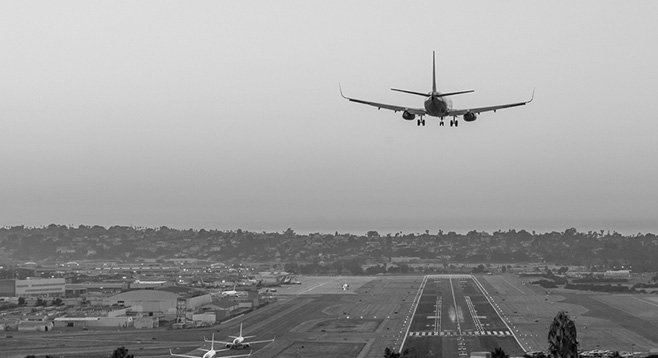 Facebook
Facebook
 X
X
 Instagram
Instagram
 TikTok
TikTok
 Youtube
Youtube

Dry ice and flying don’t mix. That’s the word from Los Angeles, where two ex-airport workers were each sentenced to three years’ probation and 480 hours of community service for setting off dry-ice bombs at airport terminals last October. Dry ice, composed of super-cooled carbon dioxide and frequently used to keep perishables frozen in transit, also presented a worrisome situation for at least one passenger plane departing San Diego’s Lindbergh Field, as documented by a recent disclosure posted on the Federal Aviation Agency’s accident reporting website. “Operating [a one-plus-hour flight] in a B-757 under a dry ice waiver,” wrote the anonymous co-pilot of a plane from an unidentified airline. As the craft pushed back from the gate, the crew’s carbon dioxide monitors suddenly sounded and they were forced to hastily don their auxiliary air packs. “Highest levels noted were .6% for the Captain and .7% for the [First Officer],” the report continued.
“Not sure what actually caused the event,” the co-pilot observed. “We obviously had quite a bit of dry ice aboard. I mistakenly thought the rigid cargo barrier and normal ventilation would take care of most of [the carbon dioxide]. The speed at which the monitors alerted was surprising. Fortunately we were almost complete with the engine start and the packs were quickly available. Also, the Captain opened his window, which I’m sure helped.” The intrepid flyer offered the government some advice regarding similar incidents in the future: “Opening a window, while helpful, is not always feasible. I have no intention of flying complete legs on supplemental oxygen. Further, we should have some real, hands on training with the new monitors and what each alert means. A bulletin is not cutting it when personal safety is concerned.”


Dry ice and flying don’t mix. That’s the word from Los Angeles, where two ex-airport workers were each sentenced to three years’ probation and 480 hours of community service for setting off dry-ice bombs at airport terminals last October. Dry ice, composed of super-cooled carbon dioxide and frequently used to keep perishables frozen in transit, also presented a worrisome situation for at least one passenger plane departing San Diego’s Lindbergh Field, as documented by a recent disclosure posted on the Federal Aviation Agency’s accident reporting website. “Operating [a one-plus-hour flight] in a B-757 under a dry ice waiver,” wrote the anonymous co-pilot of a plane from an unidentified airline. As the craft pushed back from the gate, the crew’s carbon dioxide monitors suddenly sounded and they were forced to hastily don their auxiliary air packs. “Highest levels noted were .6% for the Captain and .7% for the [First Officer],” the report continued.
“Not sure what actually caused the event,” the co-pilot observed. “We obviously had quite a bit of dry ice aboard. I mistakenly thought the rigid cargo barrier and normal ventilation would take care of most of [the carbon dioxide]. The speed at which the monitors alerted was surprising. Fortunately we were almost complete with the engine start and the packs were quickly available. Also, the Captain opened his window, which I’m sure helped.” The intrepid flyer offered the government some advice regarding similar incidents in the future: “Opening a window, while helpful, is not always feasible. I have no intention of flying complete legs on supplemental oxygen. Further, we should have some real, hands on training with the new monitors and what each alert means. A bulletin is not cutting it when personal safety is concerned.”
Comments